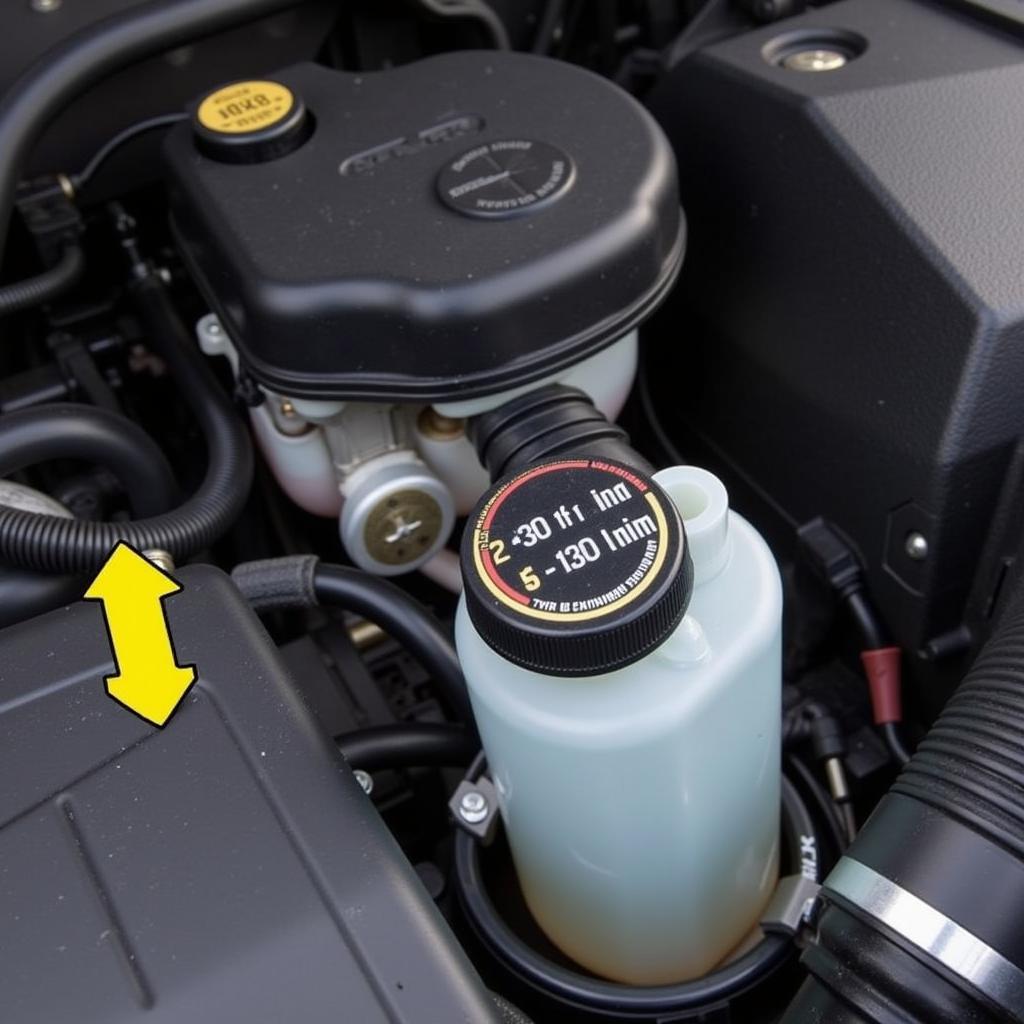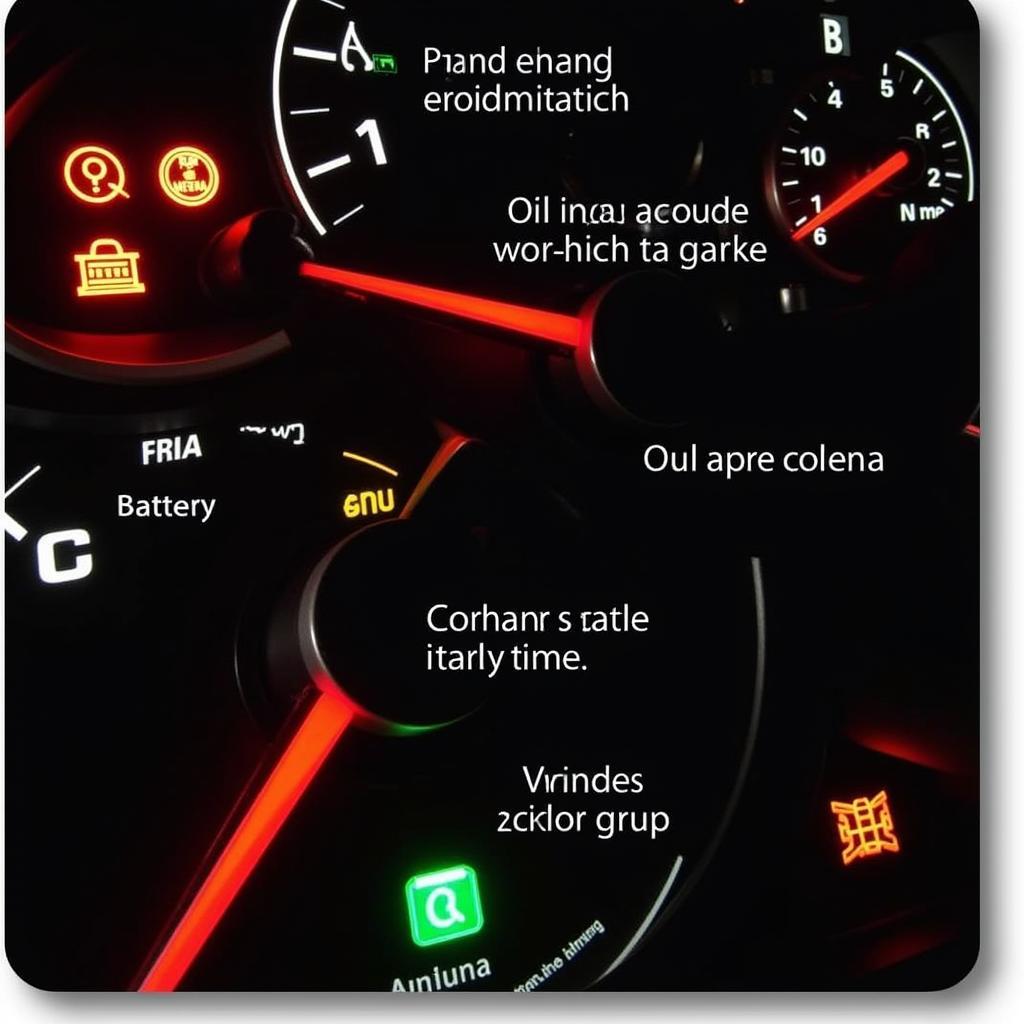The dreaded brake warning light on your BMW 116i dashboard can be a source of anxiety. Understanding why this light illuminates and knowing how to address the issue is crucial for safe driving. This comprehensive guide delves into the common causes of the BMW 116i brake warning light, providing troubleshooting steps and potential solutions.
Understanding Your BMW 116i Brake Warning Light
The brake warning light in your BMW 116i isn’t just a single indicator. It can signal several different issues, from low brake fluid to more serious problems with the braking system. Ignoring this light can lead to dangerous driving conditions and costly repairs. Therefore, prompt action is crucial when the brake warning light appears on your dashboard.
Common Causes of the BMW 116i Brake Warning Light
Several factors can trigger the brake warning light. These range from simple fixes to more complex mechanical issues. Here are some common culprits:
- Low Brake Fluid: This is the most frequent cause. Brake fluid naturally depletes over time, and low levels can trigger the warning light.
- Worn Brake Pads: As brake pads wear down, the brake fluid level drops, activating the warning light.
- Faulty Brake Sensor: A malfunctioning sensor can incorrectly trigger the warning light even if the brake system is functioning correctly.
- ABS Issues: Problems with the Anti-lock Braking System (ABS), such as a faulty sensor or module, can also illuminate the brake warning light.
- Parking Brake Engaged: Sometimes, the simplest explanation is the correct one. Ensure your parking brake is fully disengaged.
 BMW 116i Brake Fluid Reservoir Location
BMW 116i Brake Fluid Reservoir Location
Troubleshooting the BMW 116i Brake Warning Light
If your BMW 116i brake warning light illuminates, follow these steps to troubleshoot the problem:
- Check the Parking Brake: Make sure the parking brake is fully released.
- Inspect Brake Fluid Level: Locate the brake fluid reservoir and check the fluid level. If it’s below the minimum line, add brake fluid of the correct specification.
- Visually Inspect Brake Pads: Check the brake pads through the wheel spokes for wear. If they appear thin, they likely need replacement.
When to Seek Professional Help
While some issues can be addressed with basic DIY maintenance, more complex problems require professional attention. If you’ve checked the basics and the light remains on, or if you notice any unusual braking performance, such as grinding or pulling, take your BMW 116i to a qualified mechanic immediately.
“Ignoring a persistent brake warning light can lead to serious safety risks,” says John Miller, a certified BMW technician with over 20 years of experience. “It’s always better to err on the side of caution and have a professional diagnose the problem.”
Remote Diagnostics and Software Solutions
Modern technology allows for remote diagnostics and software updates that can address certain brake system issues in your BMW 116i. Specialized software can identify faults within the ABS module or other electronic components. These advanced diagnostic capabilities can pinpoint the root cause more efficiently than traditional methods.
Conclusion
The BMW 116i brake warning light serves as a vital safety indicator. Understanding its various causes and employing proper troubleshooting techniques can help you maintain your vehicle’s braking system and ensure safe driving. If you encounter a persistent brake warning light, seeking professional assistance is crucial for a thorough diagnosis and effective resolution. Don’t ignore this critical warning – your safety depends on it.
“Regular maintenance and prompt attention to warning lights are essential for keeping your BMW 116i performing optimally and ensuring your safety on the road,” adds Miller.
FAQ
- What should I do if my BMW 116i brake warning light comes on while driving? Pull over safely as soon as possible and check the parking brake, brake fluid level, and visually inspect the brake pads.
- Can I drive my BMW 116i with the brake warning light on? It’s not recommended. Driving with the brake warning light on could be dangerous.
- How often should I check my BMW 116i’s brake fluid level? Checking your brake fluid level at least once a month is good practice.
- What type of brake fluid should I use in my BMW 116i? Consult your owner’s manual for the correct brake fluid specification.
- How much does it cost to replace brake pads on a BMW 116i? The cost varies depending on location and the specific brake pads used.
- Can a faulty brake sensor cause the brake warning light to come on? Yes, a malfunctioning sensor can trigger the warning light even if the brakes are functioning correctly.
- What is the role of remote diagnostics in addressing BMW 116i brake issues? Remote diagnostics can efficiently pinpoint the root cause of brake system problems by identifying fault codes within electronic components.

